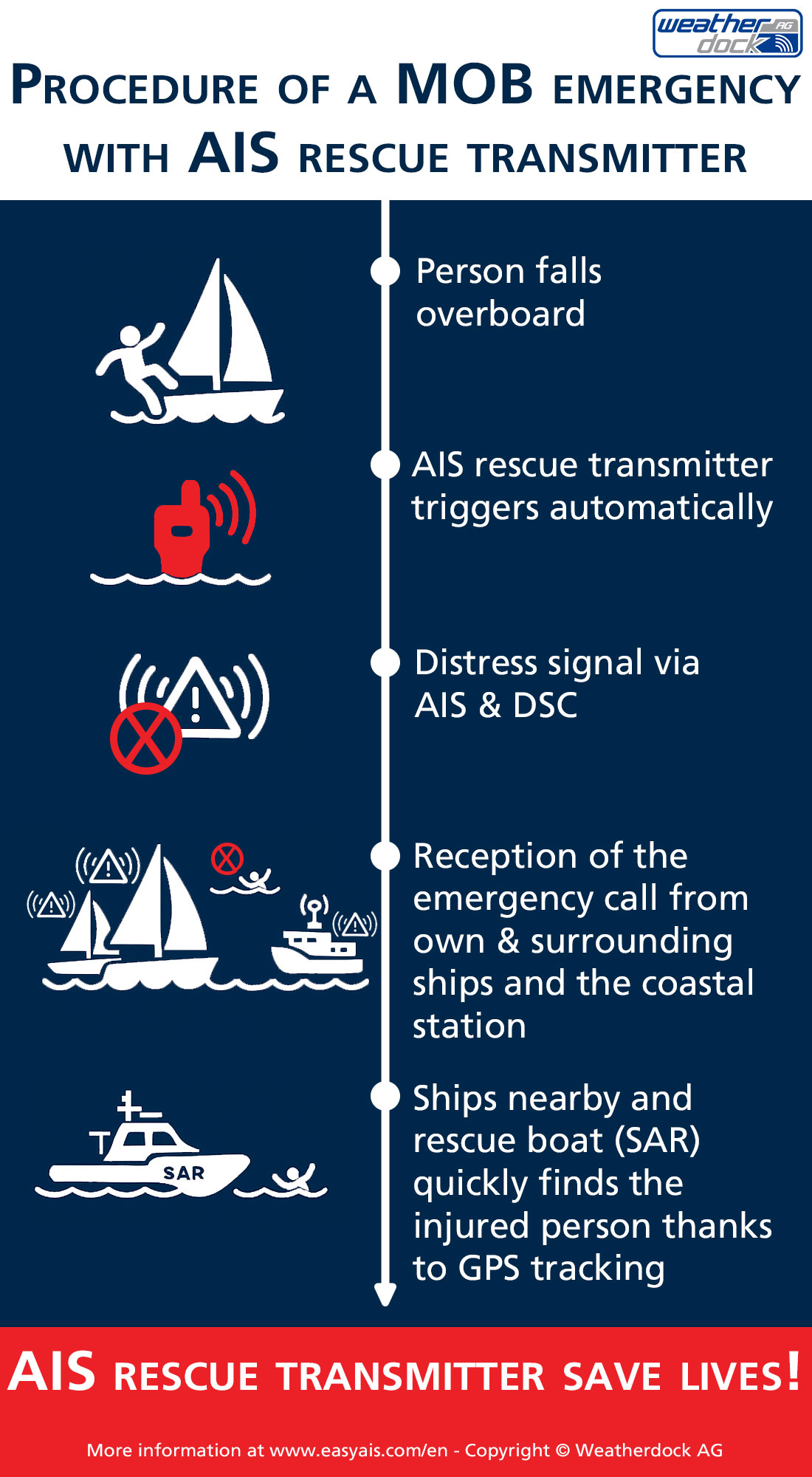At sea, every minute can be crucial. Whether you’re an experienced sailor, a passionate powerboat driver, or a professional marine operator, your safety and that of your crew are always our top priority.
In addition to proven aids such as life jackets and EPIRBs (Emergency Position Indicating Radio Beacons), which have long been standard equipment, AIS (Automatic Identification System) rescue transmitter, such as AIS MOB or AIS SART, are becoming increasingly important in significantly increasing safety at sea. They are an indispensable addition that helps to find you or your crew quickly and reliably in an emergency.
What is an AIS distress beacon?
An AIS rescue transmitter operates via the Automatic Identification System (AIS) and — if it complies with the latest standard (ECDIS 63269 IEC 2022) — also via DSC (Digital Selective Calling) and transmits a distress call with the current GPS position. The signals are transmitted by surrounding vessels, as well as by the GMDSS (Global Maritime Distress and Safety System) to the responsible MRCC (Maritime Rescue Coordination Center), i.e., the coastal stations. Two types of beacon are distinguished:
- AIS MOB (Man Overboard): Designed specifically for people in the water, it’s small and lightweight and can be worn on the body, often attached directly to a life jacket.
- AIS SART (Search and Rescue Transponder): For life rafts or boats in distress.
Both systems ensure that the exact location is immediately visible – regardless of visibility or weather conditions.
INFOGRAPHIC
Embed this infographic on your site:
Process of a MOB emergency with an AIS distress beacon
Our infographic shows the precise and rapid process of a MOB accident involving such an AIS rescue beacon:
1. The emergency situation: Person falls overboard
The emergency begins when a person falls overboard. Whether due to an unexpected wave, a mistake, or a gust of wind.
2. Automatic activation of the beacon
If the person is carrying an AIS distress beacon (such as an AIS MOB or AIS SART), it is usually automatically activated as soon as it comes into contact with water or is manually activated. This is the crucial step that sets the rescue chain in motion.
3. Alerting via AIS & DSC
The activated beacon now sends a distress signal simultaneously via two essential channels: AIS (Automatic Identification System) and DSC (Digital Selective Calling). This parallel alert maximizes the range and the probability that the distress call will be received quickly.
4. Reception of the distress call by surrounding vessels and coastal stations
The signal is received not only by the vessel’s own yacht (if an AIS receiver is on board), but also by all nearby vessels and by the responsible coastal station. The receivers’ plotters and maps display the exact position of the person who has fallen overboard.
5. Rapid location thanks to GPS and initiation of SAR measures
The AIS distress beacon has integrated GPS. This means that it not only transmits a distress signal but also the position of the person in distress.
This precise location enables nearby vessels and the official search and rescue (SAR) service to navigate directly to the scene of the accident without time-consuming searching. The rescue boat or assisting yacht can quickly locate and rescue the person.
Advantages of an AIS MOB or AIS SART
Conclusion
Ein AIS-Seenotsender ist ein unverzichtbarer Bestandteil moderner Sicherheitsausrüstung auf See. Ob als AIS MOB für Segler und Motorbootfahrer oder als AIS SART für größere Boote und Rettungsinseln – die Geräte sorgen dafür, dass im Notfall wertvolle Minuten nicht verloren gehen.
An AIS rescue transmitter is an essential component of modern safety equipment at sea. Whether as an AIS MOB for sailors and motorboaters or as an AIS SART for larger boats and life rafts, these devices ensure that valuable minutes are not lost in an emergency.

